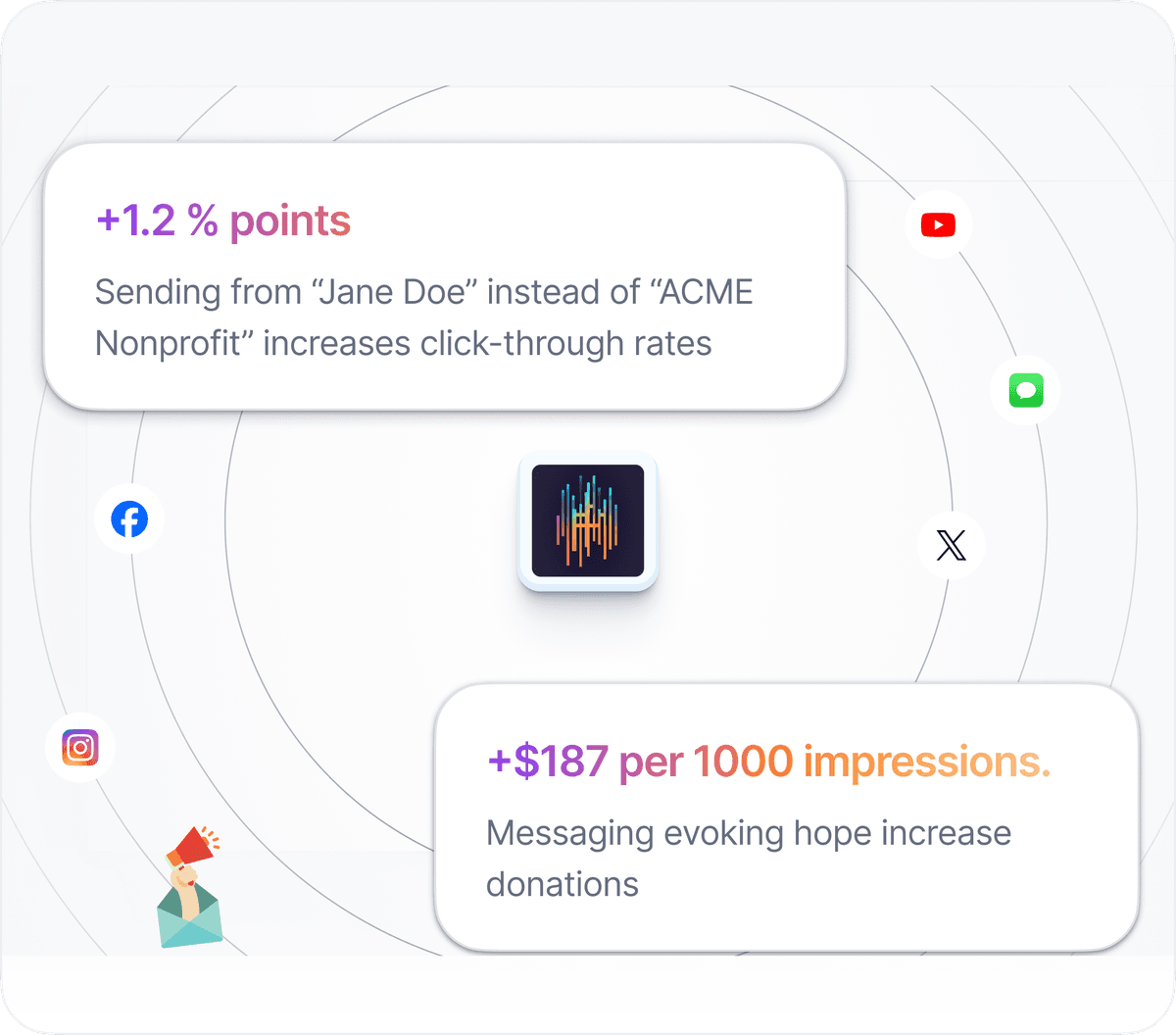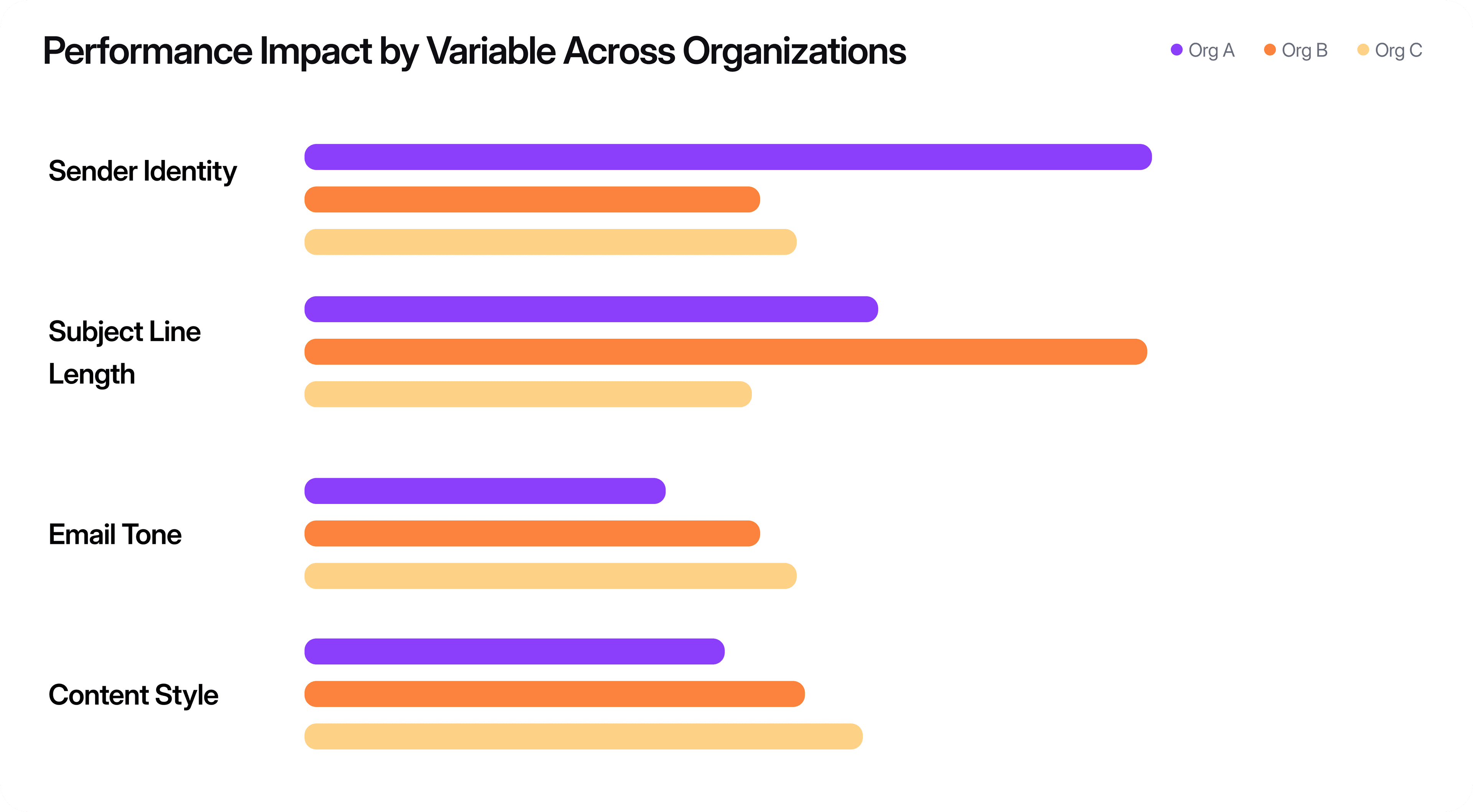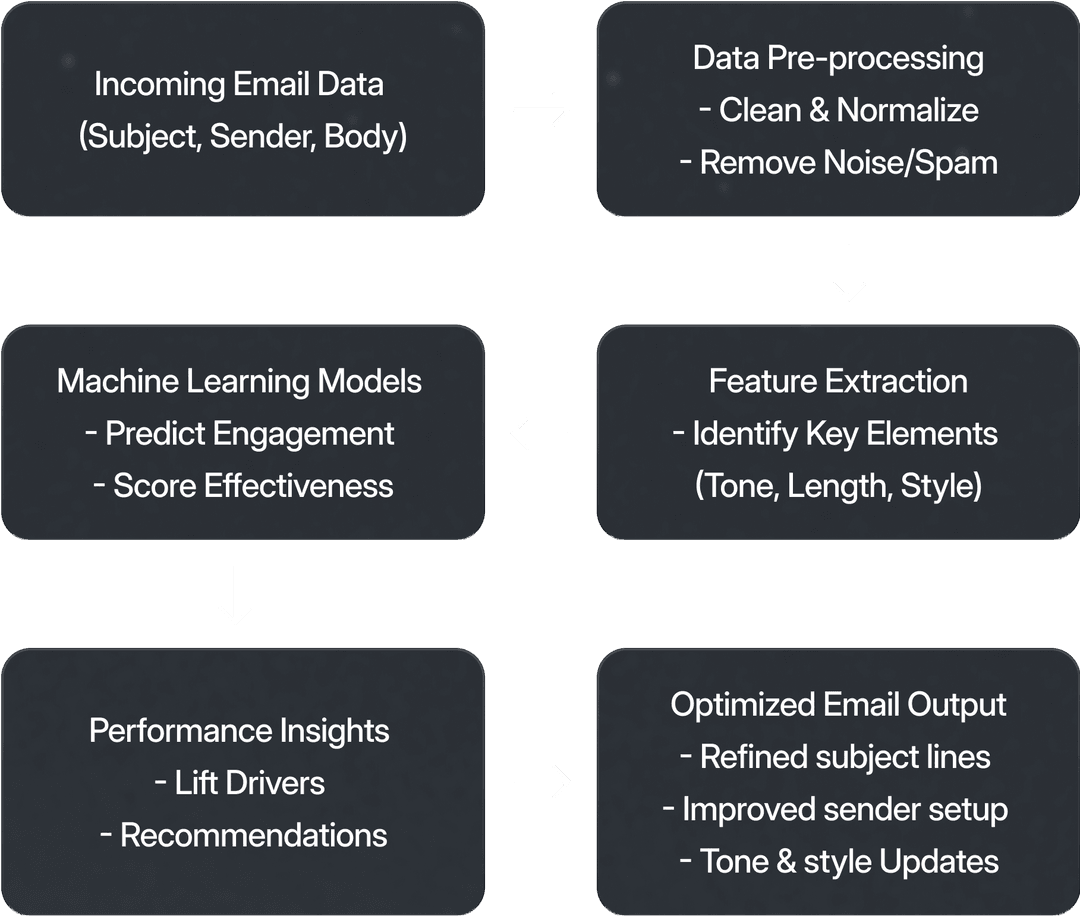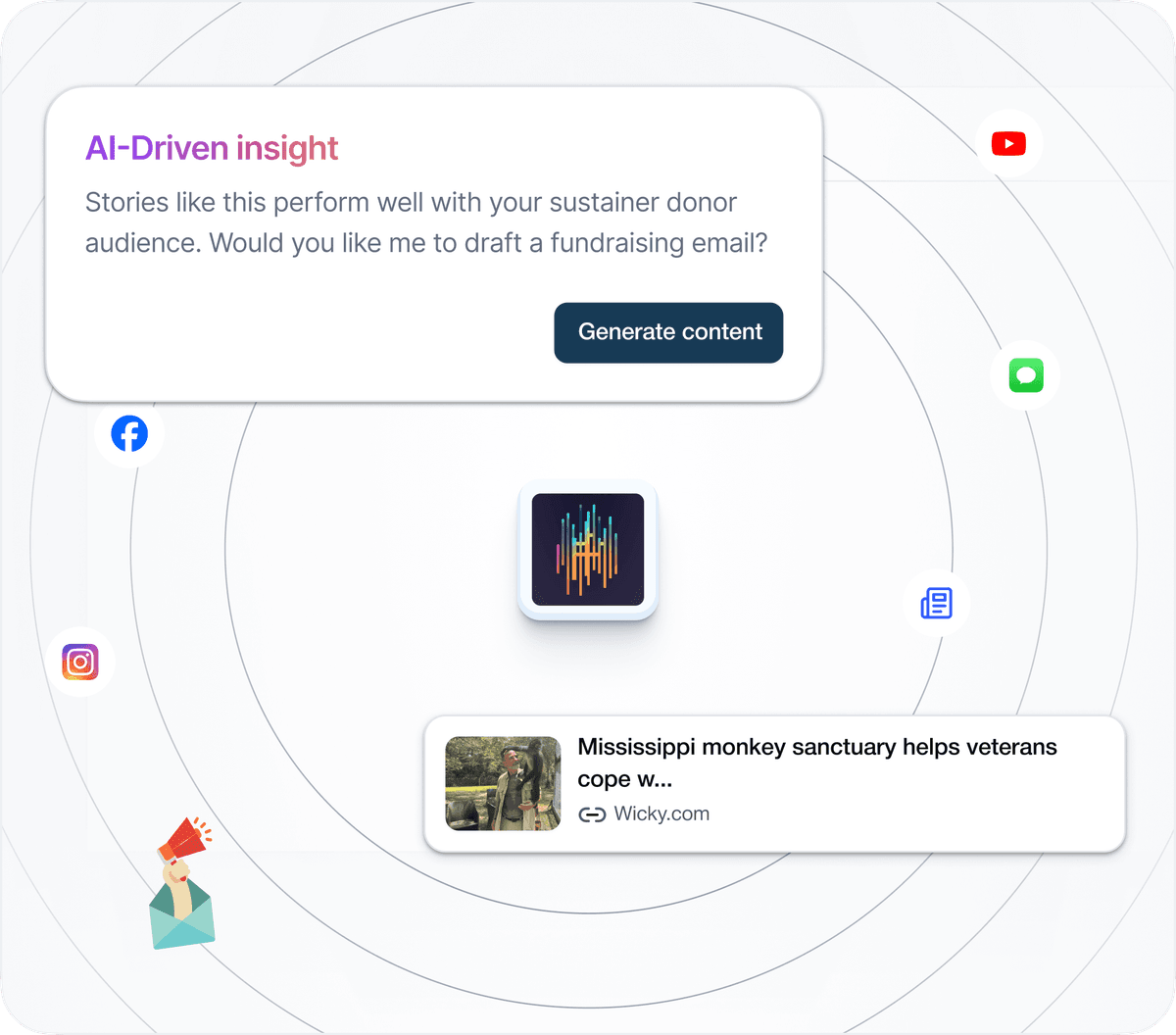
Email Performance Analysis
Unlock Millions in Untapped Revenue with Smarter Email Insights
Chorus's advanced data tools reveal the hidden patterns driving your email performance—turning small changes into massive impact
This page showcases actual findings from our analysis for real organizations.

Key Findings That Drive Performance
Small Changes, Massive Impact
Our analysis found that seemingly minor variables can significantly impact email performance:
Email Structure
Shorter emails improved clickthrough rates by
Content Style
Formal copy style increased clicks by
Subject Lines
Longer subject lines boosted performance by
Emotional Tone
Specific emotional tones affected engagement rates by up to
Organization-Specific Insights
Each organization needs its own playbook. Our analysis revealed distinct patterns across different clients:

For one client, sender identity drove a 5.3 percentage point difference in action rates, while for another, subject line length was the key factor.

How We Do It: Advanced Data Analysis
Chorus combines entity extraction algorithms, machine learning, and LLMs to evaluate both quantitative metrics and qualitative variables like tone and style.
We identify statistically significant patterns that have meaningful impact on your key performance indicators.

Real Business Impact
For one organization, our analysis showed that optimizing email style alone could generate nearly $1.5 million in additional revenue annually.
Our models explained up to 71% of variance in action response rates for another client, identifying clear opportunities for improvement.
ROI Calculator
Calculate your potential revenue impact
List size
Frequency of email sends (weekly, daily, monthly)
Project Annual Revenue Increase
$0 - $0
Based on a baseline of $58 in donations per 1000 emails sent

Beyond Basic Analytics
Traditional email analytics tell you what happened. Chorus tells you why it happened and how to improve.
What Sets Us Apart:
Hourly analysis turnaround vs. weeks of manual work
Identification of non-obvious performance drivers
Organization-specific insights rather than generic best practices
Natural language query interface for exploring your data
